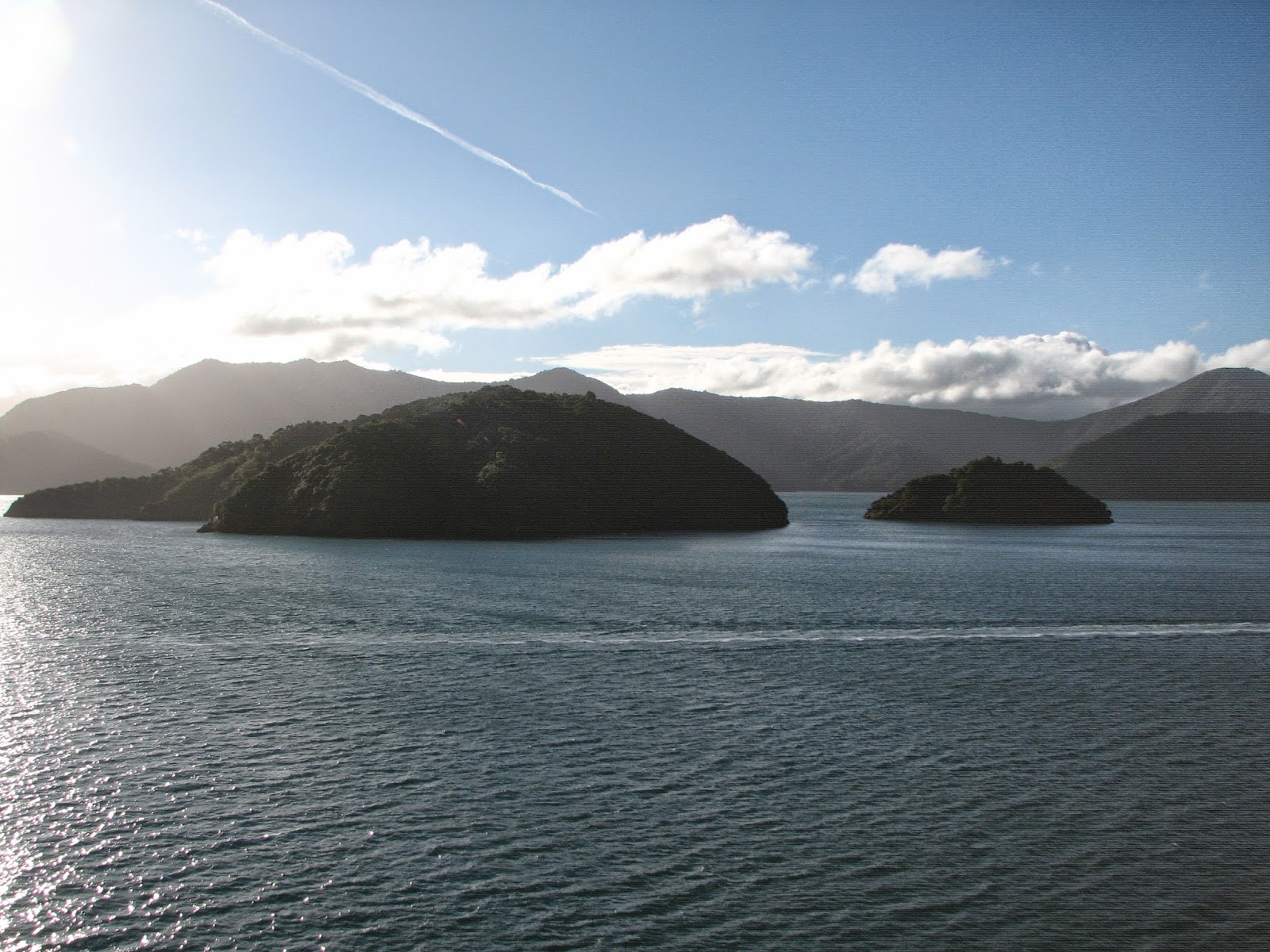Our last week was kind of a whirlwind! Before leaving Taupo we stopped at Huka
Falls, and then headed to Rotorua to see Wai-O-Tapu Thermal Wonderland. Wai-O-Tapu is the largest area (18 km2)
of hydrothermal activity inside the Taupo Volcanic Zone. The area consists of collapsed craters, cold
and boiling pools of water and mud, and steaming fumaroles (an opening in the
earth’s crust). It takes about an hour
and a half to get through the hydrogen sulfide smelling park, and you get to
see different coloration from mineral deposits.
We saw green (colloidal sulfur/ferrous salts), orange (antimony), purple
(manganese oxide), white (silica), yellow-primrose (sulfur), red-brown (iron
oxide), and black (sulfur and carbon). The
most iconic formation is the Champagne Pool.
This 700 year old spring is 65m wide and 62m deep, with a steaming 160˚F
surface temperature and escaping bubbles of carbon dioxide. The pool has an interesting color combination
of blue with an orange rim, caused by deposits of gold, silver, mercury,
sulfur, arsenic, thallium, and antimony.
I also loved the Devil’s Bath at the end of the trail, a lime green pool
inside a rugged-edged crater.
We
drove into the city of Rotorua in the afternoon to get some information and see
the lake. I saw my favorite quote of the trip on a
sign outside a restaurant saying, “No free WIFI. You’re just going to have to talk to each
other!” That’s how I’ve been feeling
this trip, connecting with nature, and more and more appalled by people addicted
to their smart phones. Sorry, rant over. We camped that night
at Lake Okareka and witnessed a beautiful pink sunset. In the morning we drove back to Lake Rotorua
for breakfast. At this point, we weren’t
very sure what to do next so we sporadically decided to head to the Coromandel
Peninsula via Tauranga. In Tauranga we
climbed Mt Maunganui, had lunch on the beach, took a walk, and ate gelato. We continued on to Waihi, our gateway to the
Coromandel Peninsula. Waihi has an
operating gold and silver mine; it was very cool to see the excavating
equipment in action. By nightfall we had
reached the Wentworth Valley Campground, complete with surveillance cameras, a Rottweiler
watch dog, drop toilets, and cold showers. We had to perform two shallow river crossings over
a cement slab to get there, and were sort of sad we went to so much
trouble. I’d say avoid this place if
ever you travel to Coromandel.
The
next couple of days were more beautiful though.
We saw Hahei Beach, Cathedral Cove, and Hot Water Beach. Hot Water Beach was my favorite! In the past, volcanoes developed large
underground reservoirs of heated water which escape to the surface over
time. It cools along the way, but can have temperatures as hot as 147˚F and flow rates as high as 15 L/minute. This spring was located on
the beach and could be accessed at low tide, between 4 and 6pm. When we arrived we grabbed a shovel and Paul
dug us our own little pool. There was
strategy involved: you didn’t want to be
too close to the spring (too hot), not too far away (too cold), had to continually keep digging your
pool deeper due to collapsing sand, and build a sand wall to protect your hole from encroaching waves. It was well worth it though, like an outdoor
(and free) spa treatment!
The
next day we saw Otama Beach, Coromandel Town, and Thames. It was uneventful and the following day we
had to return the van in Auckland. We
hadn’t made accommodation plans because there was no internet, and thankfully
my friend Mariel and her family saved us!
They graciously allowed us to stay with them and Paul and I are so
grateful. The last four days of Paul’s
time was spent exploring Auckland, visiting the black sand beaches of Piha, and
cooking delicious foods for us like Pain Perdu (French toast), zucchini gratin,
and leek and feta quiche. It was a very
sad day when I rode the bus to the airport with him and we said our goodbyes. However, I am planning a trip to France
before I head back to the US so our adventures can continue. Paul, you were a superb travel
companion!
Champagne Pool, Wai-O-Tapu, Rotorua
Devil's Pool, Wai-O-Tapu, Rotorua
Sunset over Lake Okareka
Mt Maunganui, Tauranga
Cathedral Cove, Hahei
Cathedral Cove, Hahei
Hot Water Beach, Hahei
Coromandel Town
Estuary near Miranda
My mantra for life
Downtown Auckland
Piha Beach, notice the amazing black sand






















































